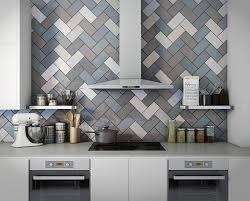Let us be more precise: Some commonly asked questions concerning subway tiles are included below.
The Fundamentals of Subway Tile
What is the pattern of the subway tiles?
Subway tiles are generally placed with a 50% offset, which means that the tile’s center lines with the borders of the two tiles above or below it. However, contemporary versions of subway tile sometimes deviate from or even forsake this pattern entirely. Subway tile designs with an offset of one-third and one-fourth are also available.
What is the normal size of a subway tile?

How big is a subway tile? Subway tile is generally 3 x 6 inches in dimension, and this is the most common size. However, any rectangular tile with a dimension of one to two may be used as a subway tile, as can additional subway tile sizes such as 2 x 4, 4 x 8, or 6 x 12.
Subway tile is made of what material? Is subway tile ceramic or porcelain? Originally, subway tiles were made of ceramic. Today, subway tiles are available in ceramic, porcelain, and glass varieties, all of which are popular for the same reason ceramic tiles were first chosen: minimal maintenance and fantastic elegance.
Are subway tiles too expensive?
Subway tiles are rather inexpensive, particularly if you go with the basic white style.
Installation and Maintenance of Subway Tiles
Installing subway tile: Conduct research on what goes into subway tile installation for your planned use and particular requirements, such as how to install subway tile in a shower. Consider exploring specifics such as how to tile subway tiles backsplash corner or how to tile a subway tile shower niche. If you lack the essential expertise or equipment, we suggest hiring a certified tile installer to assure a high-quality installation.
The proper approach to install subway tile is as follows:
Lay subway tiles with a 50% offset for the conventional subway tile pattern. Each tile’s center should align with the boundaries of the two subway tiles above and below it. Because subway tile normally has one to two dimensions, the short side of a tile may be used to calculate the long side’s midpoint. We recommend that you do a dry layout prior to installing your tile to establish where your cuts will be required.
The proper technique to cut subway tile is as follows:

You may need to trim a few subway tiles to accommodate outlets and the proportions of your area. Certain cuts can be accomplished using a snap cutter and a score and snap technique, while others may need the use of a wet saw. A wet saw may be required for certain materials, such as porcelain and glass tiles. If you lack this equipment or the necessary abilities to securely use them, we suggest contacting a certified tile installation.
How long does subway tiles installation take?
Subway tile installation is dependent on the size of the application to be tiled, the layout’s intricacy, and the tile installer’s skill. However, the majority of conventional subway tile applications are quite simple to install, particularly in tiny sections like backsplashes.
Can subway tile be installed over drywall?
Subway tile may be installed over drywall as long as the region is not subjected to excessive dampness. Cement board supporters increase the long-term durability of high-moisture regions (such as shower walls).
Is it possible to paint subway tiles?
Except for small-scale do-it-yourself projects, painting ceramic subway tiles is not suggested. Painting your subway tile may reduce its resistance to stains and scratches, and the pattern may become unattractive with time. A better choice is to choose subway tiles in the desired color or pattern.
What is the proper technique to clean subway tile? Subway tiles may be cleaned in the same manner as any other ceramic tile: with a damp cloth. Visit https://www.pinterest.com/studiolinteriordesign/subway-tile-patterns/ to read about some beautiful patterns of subway tiles.
Subway Tiles and Grout
Grouting subway tile: To mix and apply grout, follow the manufacturer’s guidelines.
How to choose a grout color for white subway tile: Subway tile in white is often used with white, gray, or black grout.
However, white subway tile — or any subway tile color, for that matter — may be used with any color of grout. Consider whether you want to attract attention to the layout pattern or not when choosing grout color for subway tile. Subway tiles with contrasting grout draw attention to the design, but subway tile with matching grout gives a seamless appearance.
Choosing a vibrant grout color may also be a fun way to personalize your white subway tiles.
Pro tip: Grouts that are highly contrasted with the color of your tile may also highlight any faults in the grout line and any difference in tile size.
How wide should subway tile grout lines be?
Typically, 3 x 6-inch subway tiles have 1/16 inch grout joints, however, 1/8 inch grout joints are also frequent.
Subway Tile Patterns with a Twist
Now that you’re familiar with some of the common qualities of conventional subway tiles, disregard them. A distinguishing element of contemporary subway tile is its willingness to push limits in search of novel ways to exhibit subway tile design.
This often entails modifying the layout pattern itself.
The following are some unique techniques to install subway tiles.
With a One-Third Offset Subway Tile
Only slightly different from the usual 50% offset, the one-third offset design is another popular subway tile style.
With a One-Fourth Offset Subway Tile
Stagger your subway tiles by 25% to create the illusion of steps ascending and descending your wall.
Horizontal Grid of Subway Tiles
Another possibility is to omit the offset entirely. This results in the creation of a typical horizontal grid.
Vertical Grid of Subway Tiles
To create a vertically offset or stacked design, flip your subway tile over. Vertical subway tiles patterns are an excellent technique to extend the length of a backsplash or wall and to pull the attention upward. To create a really unique design, rotate the typical subway tile configuration by 45 degrees to create a diagonal pattern.
Herringbone Patterned Subway Tile
The herringbone subway tiles provide movement to any application and may be set at various angles to achieve a variety of designs. Above is an illustration of the typical herringbone pattern.
How to lay herringbone subway tile:
Herringbone tile installation is significantly more challenging than typical offset tile installation since it needs diagonal cuts around outlets and the perimeter of your room. Before you begin, take precise measurements and practice arranging everything. Click here to read about the different styles and patterns of subway tiles.


